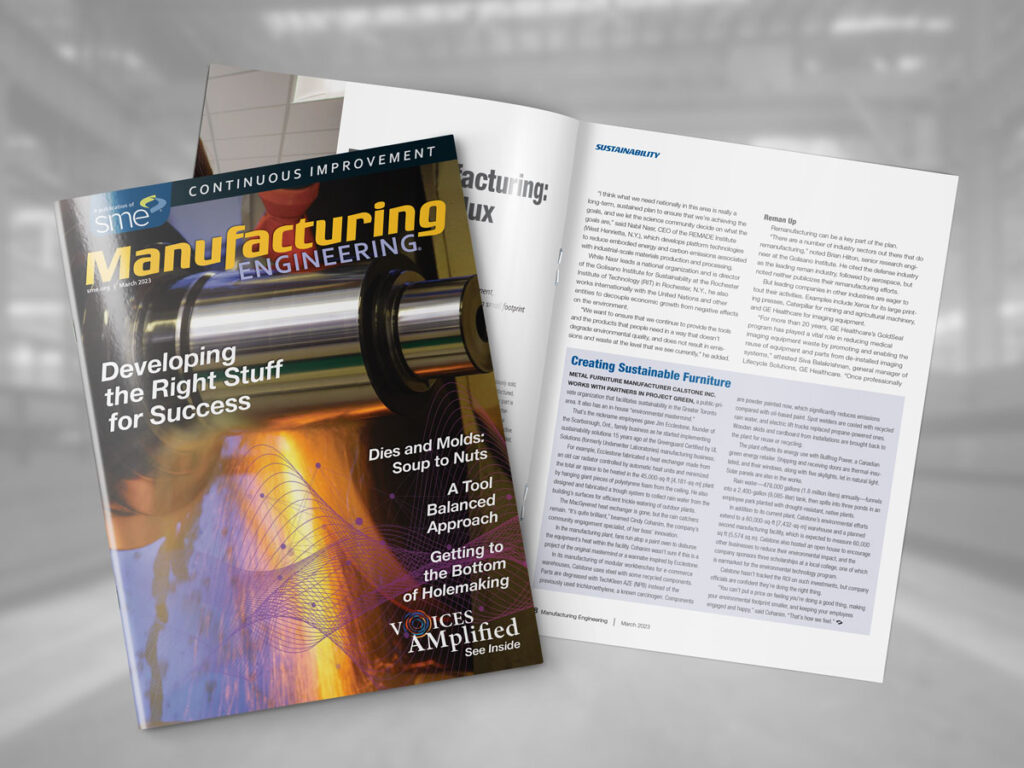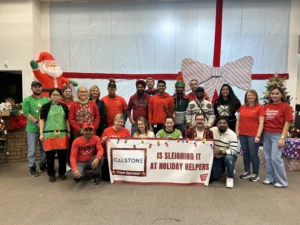METAL FURNITURE MANUFACTURER CALSTONE INC. WORKS WITH PARTNERS IN PROJECT GREEN, a public-private organization that facilitates sustainability in the Greater Toronto area. It also has an in-house “environmental mastermind.”
That’s the nickname employees gave Jim Ecclestone, founder of the Scarborough, Ont., family business as he started implementing sustainability solutions 15 years ago at the Greenguard Certified by UL Solutions (formerly Underwriter Laboratories) manufacturing business.
For example, Ecclestone fabricated a heat exchanger made from an old car radiator controlled by automatic heat units and minimized the total air space to be heated in the 45,000-sq-ft [4,181-sq-m] plant by hanging giant pieces of polystyrene foam from the ceiling. He also designed and fabricated a trough system to collect rain water from the building’s surfaces for efficient trickle watering of outdoor plants.
The MacGyvered heat exchanger is gone, but the rain catchers remain. “It’s quite brilliant,” beamed Cindy Cohanim, the company’s community engagement specialist, of her boss’ innovation.
In the manufacturing plant, fans run atop a paint oven to disburse the equipment’s heat within the facility. Cohanim wasn’t sure if this is a project of the original mastermind or a wannabe inspired by Ecclestone.
In its manufacturing of modular workbenches for e-commerce warehouses, Calstone uses steel with some recycled components. Parts are degreased with TechKleen AZE (NPB) instead of the previously used trichloroethylene, a known carcinogen. Components are powder painted now, which significantly reduces emissions compared with oil-based paint. Spot welders are cooled with recycled rain water, and electric lift trucks replaced propane-powered ones.
Wooden skids and cardboard from installations are brought back to the plant for reuse or recycling. The plant offsets its energy use with Bullfrog Power, a Canadian green energy retailer. Shipping and receiving doors are thermal-insulated, and their windows, along with five skylights, let in natural light. Solar panels are also in the works.
Rain water—476,000 gallons (1.8 million liters) annually—funnels into a 2,400-gallon (9,085-liter) tank, then spills into three ponds in an employee park planted with drought-resistant, native plants.
In addition to its current plant, Calstone’s environmental efforts extend to a 80,000-sq-ft [7,432-sq-m} warehouse and a planned second manufacturing facility, which is expected to measure 60,000 sq ft (5,574 sq m). Calstone also hosted an open house to encourage other businesses to reduce their environmental impact, and the company sponsors three scholarships at a local college, one of which is earmarked for the environmental technology program.
Calstone hasn’t tracked the ROI on such investments, but company officials are confident they’re doing the right thing.
“You can’t put a price on feeling you’re doing a good thing, making your environmental footprint smaller, and keeping your employees engaged and happy,” said Cohanim. “That’s how we feel.”




